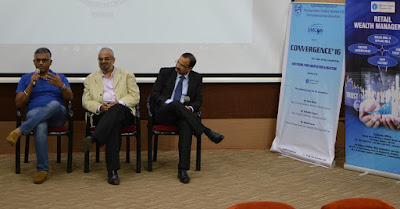So when I received a request to be part of the jury panel for an inter-B-School business idea competition, I consented to it despite it being scheduled on a Winter Sunday morning!. Each student team had to present a business idea along with the GTM and business plan. A couple of teams made stellar presentations. However, I found it somewhat odd that every team had come up with a descriptive (functional) brand name for its product/service. For instance, if a business idea was around fashion, the brand was called Fashion-Something or some such. Obviously, none stuck.
That prompted me to write this post. In the startup age, it is important for young entrepreneurs to get their brand names right.
Coming up with a descriptive name is a natural human response. That's how we function under regular circumstances. If we're going to work, we say we're going to work. We don't say we're going to have another day in Paradise. If we're eating a paper masala dosa, we say we're eating a paper masala dosa. We don't say that we're discovering the delectable taste of warm potatoes gift-wrapped in edible paper.
But Branding & Marketing is ALL about storytelling, not merely relaying facts (not false stories though). So here goes: seven simple points to keep in mind when you're trying to think up or select a name for your brand.
1. Is it unique?
2. Does it lend itself well to "spreading the word"?
3. Is it category-neutral?
You might start out as a hotel aggregator but end up being a holistic travel app. Who knows what brand extensions lie in store for you in the future? Tying your brand to a single category is akin to yoking yourself to the Present. Why not pick a name that would work for any category?4. Does it have a strong visual connection?
The brain remembers things visually. So if your brand name evokes a distinct image in the mind, it's great for brand recall. It's not necessary to leave that job to your logo; your brand name could also shoulder that responsibility. It's not a must, but it surely helps. Think Shell, Orange, BlackBerry.5. Does it commemorate a story?
Again, this is not a necessary attribute, but if you have an interesting story around your inception, you might want to go with a name that commemorates that story. Here is one such story.6. Would it do well on search engines on its own?
It's somewhat related to point #1 on uniqueness. If you have a unique name, chances are you will figure well on organic searches. Doing 'search research' is a must for all the options you're considering.7. Does it have any negative connotation?
Well, this is an obvious one. It's important to do your homework on this so that your brand doesn't unwittingly end up receiving flak because it means something rude/disrespectful/funny in a different culture/context/country/language. Here are some examples of brands that ended up being the butt of jokes.Of course, these guidelines are simplistic, but then, it's better to have a basic understanding than having none at all.







